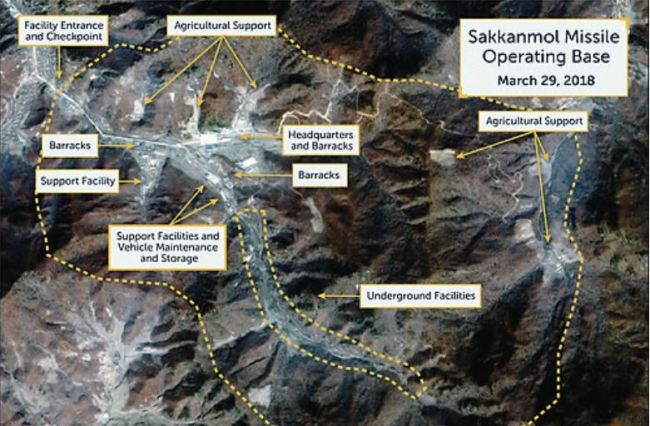Report of NK's 'undisclosed' missile bases not new, S. Korea says
By YonhapPublished : Nov. 13, 2018 - 09:16
SEOUL/WASHINGTON -- South Korea's presidential office on Tuesday played down a new report on North Korea's "undisclosed" missile sites, saying the state intelligence communities of South Korea and the United States earlier acquired relevant information.
Cheong Wa Dae added that it's going too far to call the North's continued activity a "great deception" given that it has no specific agreement to dismantle or disclose the facilities mentioned in the report issued by Beyond Parallel, a group at the Center for Strategic and International Studies.
The group said it has located 13 out of an estimated 20 missile operating bases undeclared by the secretive communist regime.
"The dispersed deployment of these bases and distinctive tactics employed by ballistic missile units are combined with decades of extensive camouflage, concealment and deception practices to maximize the survival of its missile units from pre-emptive strikes and during wartime operations," the report said.

It said the report is largely based on satellite imagery and a number of interviews with North Korean defectors, as well as government, defense and intelligence officials worldwide.
It focused on the Sakkanmol missile base for short-range ballistic missiles, presenting a set of related commercial satellite photos taken in March.
The base in the Tactical Belt in North Hwanghae Province is located 85 km north of the Demilitarized Zone and 135 km northwest of Seoul.
"Sakkanmol currently houses a unit equipped with SRBMs but could easily accommodate more capable medium-range ballistic missiles," it said.
Speaking about the report, Cheong Wa Dae spokesman Kim Eui-kyeom pointed out that the source of the analysis of the Sakkanmol base is a commercial satellite.
"The intelligence authorities of South Korea and the US have far more detailed information from military satellites and are closely monitoring (it)," Kim said.
He said the facilities have nothing to do with intercontinental ballistic missiles or intermediate-range ballistic missiles.
He took issue with a related New York Times report headlined, "In North Korea, Missile Bases Suggest a Great Deception."
The North has not promised to shut down the base, and there has been no accord or negotiations in connection with it, he stressed.
Rather, Kim said, the existence of such a missile site shows the need for talks with North Korea to get rid of its military threats.
In June summit talks with President Donald Trump in Singapore, the North's leader reportedly agreed to dismantle the Sohae satellite launch facility near the border with China, also known as the Dongchang-ri missile base.
Kim formally reaffirmed the commitment to permanently shutting down an engine testing facility and launch pad during a summit with South Korean President Moon Jae-in in September.
The CSIS report said the future of the long-range missile base, while gaining much media attention, obscures the military threat to US forces and South Korea from Sakkanmol and other undeclared ballistic missile bases.
It came amid lingering doubts about whether the North will submit a full list of its nuclear and missile programs and engage in serious denuclearization talks in spite of Trump's all optimistic statements, including the talk of his good relationship with Kim.
The report is a reminder that there's still a long way to go to eliminate the North's major weapons program.
Park Won-gon, an international relations professor at Handong Global University, said the US government seems to have leaked the information deliberately to the CSIS in order to put more pressure on Pyongyang.
"It implies a message that 'We know all the missile facilities in North Korea. So, it's useless to conceal them or delay a declaration,'" he said.
He also pointed out that the North has just declared a halt to its nuclear and missile tests, not the suspension of the operation of those existing facilities and a development program itself. (Yonhap)











![[Today’s K-pop] BTS pop-up event to come to Seoul](http://res.heraldm.com/phpwas/restmb_idxmake.php?idx=644&simg=/content/image/2024/04/17/20240417050734_0.jpg&u=)





![[KH Explains] Hyundai's full hybrid edge to pay off amid slow transition to pure EVs](http://res.heraldm.com/phpwas/restmb_idxmake.php?idx=652&simg=/content/image/2024/04/18/20240418050645_0.jpg&u=20240419100350)

